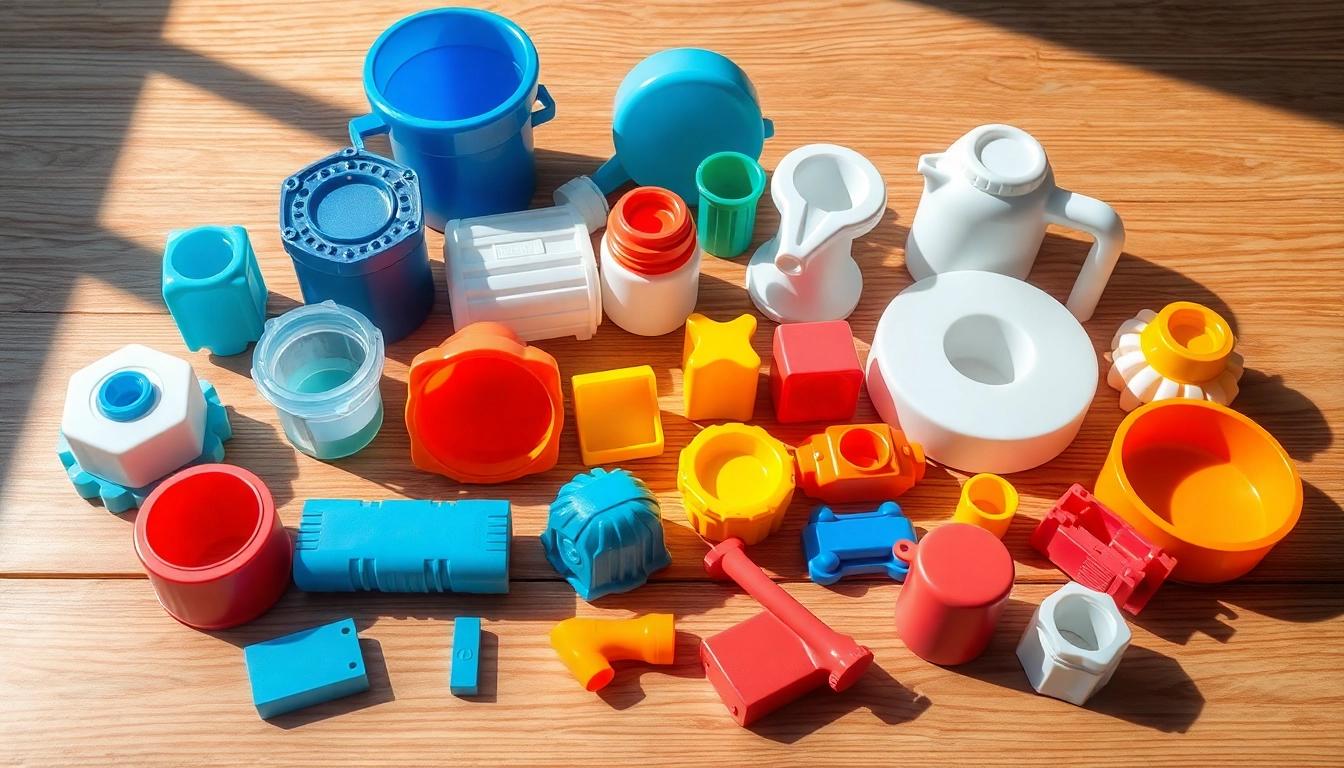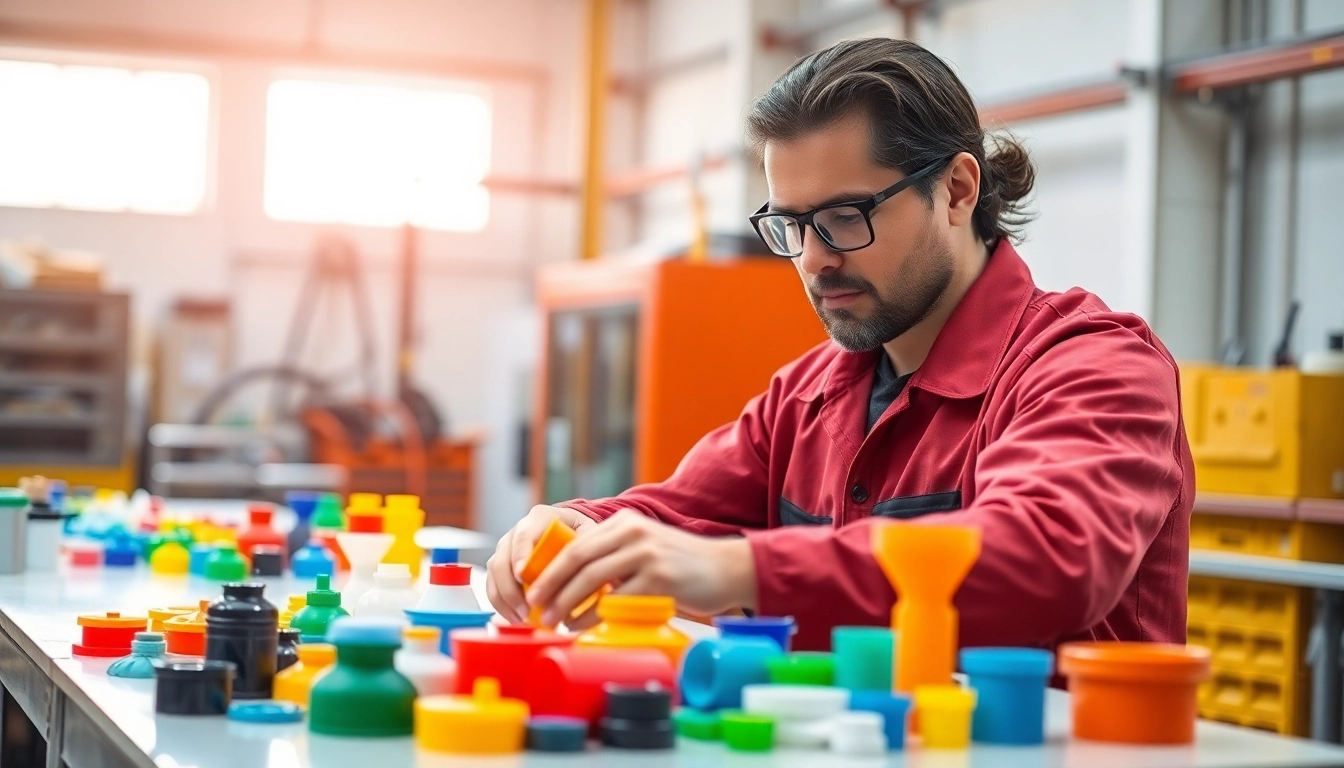Introduction to Blow Moulded Plastic Parts
In today’s competitive manufacturing landscape, understanding the nuances of production processes is critical for businesses aiming to deliver high-quality products efficiently. One such process that has gained significant traction is blow moulding, especially for the creation of blow moulded plastic parts. These parts play a vital role across various industries, providing cost-effective solutions for producing hollow shapes ranging from bottles to automotive components.
What Are Blow Moulded Plastic Parts?
Blow moulded plastic parts are hollow plastic structures formed through a highly specialized process known as blow moulding. Unlike other plastic fabrication techniques, blow moulding allows for the efficient production of lightweight and sturdy hollow components. The creation involves heating a plastic tube, or parison, and inflating it against the walls of a mould using compressed air. This process results in consistent wall thickness and incredible dimensional accuracy, making blow moulded parts suitable for various applications, from packaging to industrial use.
The Importance of Blow Moulding in Manufacturing
Considering efficiency and cost-effectiveness, blow moulding has become a pivotal process in manufacturing. Its capability to produce large quantities of parts swiftly minimizes time-to-market, providing manufacturers with a competitive edge. Moreover, blow moulded parts exhibit excellent chemical resistance and durability due to their uniform structure, making them incredibly versatile for different applications. In a world that increasingly prioritizes sustainability, the blow moulding process also supports recycling efforts as it can utilize recycled plastics.
Applications of Blow Moulded Plastic Parts Across Industries
Blow moulded plastic parts are employed across various sectors, demonstrating versatility and utility. Key applications include:
- Packaging: From simple bottles to complex containers, blow moulded plastic is predominant in the packaging industry for food and beverage products.
- Automotive: Components such as fuel tanks, air ducts, and fender liners significantly benefit from blow moulding due to weight reduction and design flexibility.
- Aerospace: The aerospace industry leverages blow moulding for producing lightweight housings and ducting to achieve fuel efficiency.
- Consumer Goods: Products like toys, outdoor furniture, and household items utilize blow moulded parts for their reliability and aesthetic appeal.
The Blow Moulding Process: A Step-by-Step Guide
The blow moulding process can be broken down into several key stages, primarily involving the creation of the parison, forming, and cooling.
Extrusion Blow Moulding Explained
Extrusion blow moulding is one of the most common methods, wherein melted plastic is extruded into a hollow tube (parison), which is then clamped into a mould. Once the mould closes, air is forced into the parison to inflate it, taking the shape of the mould. This method is ideal for producing large, hollow parts with relatively simple shapes, making it popular for items like bottles and containers.
Injection Blow Moulding Techniques
In injection blow moulding, the process begins with moulding a preform using injection moulding. The preform is then heated and placed into a blow mould, where the air inflates it to the desired shape. This technique offers superior precision and is especially effective for smaller parts where wall thickness and surface finish are critical considerations, often seen in medical devices and specialty containers.
Choosing the Right Process for Your Needs
Selecting the suitable blow moulding process depends on several factors, including part size, complexity, and production volume. Companies should conduct thorough analyses on the demands of their project, including budget constraints and raw materials to ensure efficient process selection. Consulting with an expert in blow moulding can also help to streamline this decision-making process.
Materials Used in Blow Moulding
The choice of material plays a crucial role in the performance of blow moulded parts. Different plastics offer varying properties that can influence the final product’s suitability for specific applications.
Common Plastics for Blow Moulded Parts
The most commonly used materials in blow moulding include:
- Polyethylene (PE): Widely used due to its versatility and excellent barrier properties, making it perfect for packaging.
- Polypropylene (PP): Known for its high melting point and resistance to chemicals, suitable for automotive parts and food containers.
- Polyethylene Terephthalate (PET): A popular choice for beverage containers, valued for its strength and transparency.
- Polyvinyl Chloride (PVC): Often used in pipes and fittings for its durability and resistance to environmental factors.
Environmental Considerations and Sustainable Practices
With rising environmental concerns, the blow moulding industry is actively adapting sustainable practices. Utilization of recycled plastics and the development of biodegradable polymers are steps towards reducing carbon footprints. Manufacturers are also exploring efficient waste management systems to minimize the byproducts of blow moulding processes.
Innovations in Blow Moulding Materials
Innovative materials are continually being introduced to the market, enhancing the capabilities of blow moulded products. This includes advancements in bioplastics, which offer sustainable alternatives without compromising performance. Furthermore, hybrid materials that blend various polymers can provide enhanced properties, such as flexibility or strength, catering to specific industry needs.
Quality Control and Testing for Blow Moulded Parts
Quality assurance is indispensable in the production of blow moulded parts to ensure they meet stringent specifications and standards. Various testing methods are employed to uphold product integrity.
Standard Testing Methods
Routine quality checks include visual inspections, dimensional checks, and wall thickness measurements to identify any defects early in the production process. Advanced testing techniques like X-ray fluorescence (XRF) might also be employed for detailed composition analyses.
Ensuring Durability and Performance
Durability testing is vital, especially in industries with stringent performance demands. This includes stress tests under extreme conditions to determine how well parts can withstand physical and environmental challenges. Manufacturers often conduct extensive field tests to validate durability before mass production.
Compliance with Industry Regulations
Manufacturers must adhere to applicable industry regulations, which vary by sector. Compliance not only ensures safety and quality but also builds customer trust. For instance, regulations from organizations such as the FDA for food-grade packaging require rigorous testing and adherence to material specifications.
Future Trends in Blow Moulding
The future of blow moulding is bright, with advancements in technology driving efficiency and sustainability in manufacturing.
Technological Innovations in Blow Moulding
Emerging technologies such as automation, robotics, and AI-driven data analytics are transforming traditional blow moulding practices. These innovations enable manufacturers to optimize production lines, reduce waste, and ensure more consistent product quality. The integration of smart systems for real-time monitoring can lead to proactive maintenance and reduced downtime in production.
Market Growth and Opportunities for Manufacturers
The blow moulding market is projected to expand steadily, driven by increasing demands in sectors such as packaging, automotive, and consumer goods. Manufacturers are presented with opportunities to diversify their product offerings while exploring new markets, particularly in the Asia-Pacific region, where urbanization and economic growth are accelerating.
Impact of Industry 4.0 on Blow Moulding
As Industry 4.0 continues to reshape the manufacturing landscape, blow moulding processes are becoming increasingly interconnected, allowing for smart manufacturing practices. The incorporation of IoT devices offers manufacturers a comprehensive understanding of their production environments, enabling data-driven decisions that enhance efficiency and reduce costs.

